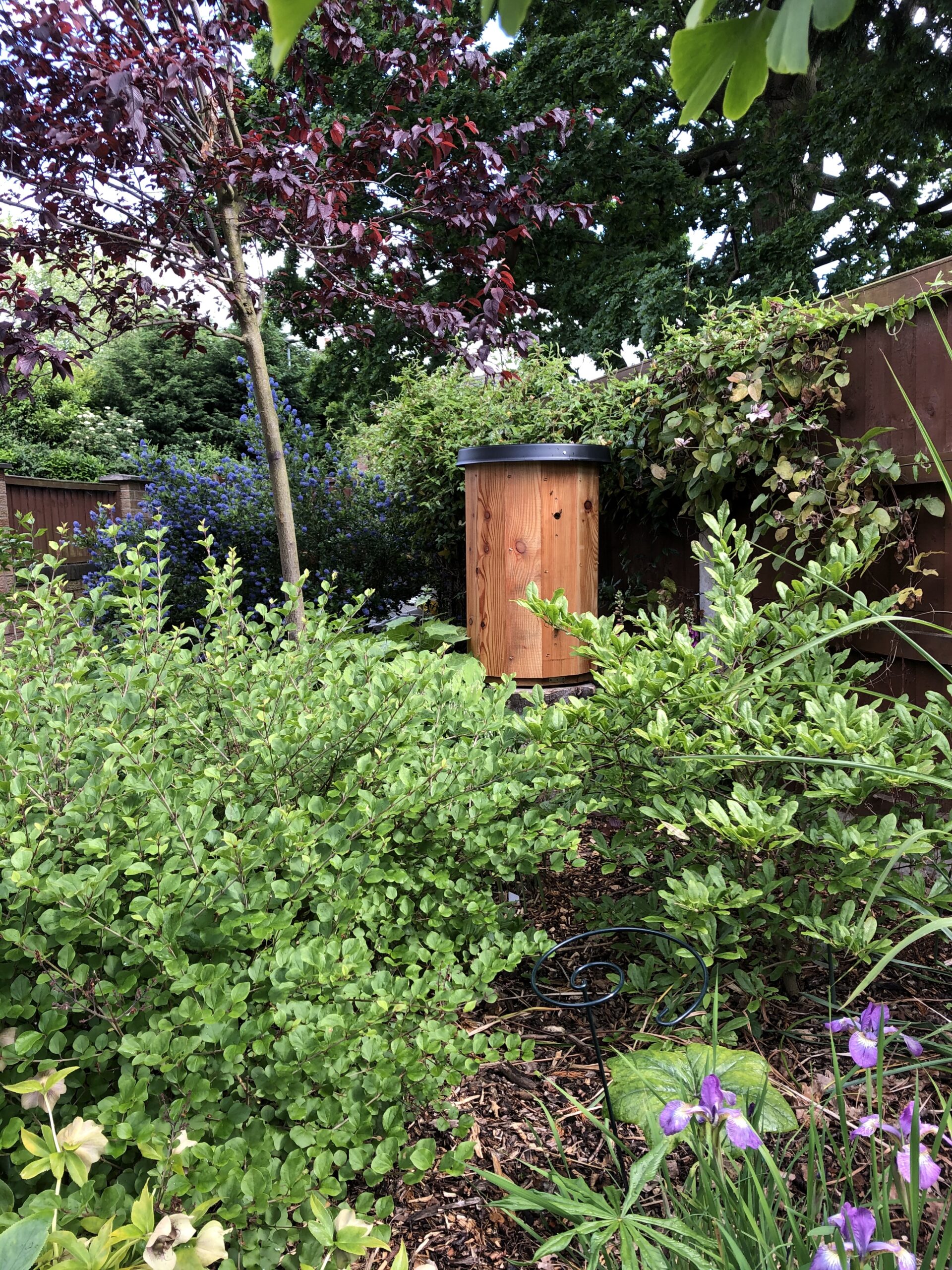
Why a freedom hive
The design of the freedom hive is credited to Matt Somerville, an accomplished woodworker and natural beekeeper. For many years, there has been recognition of the lack of suitable wild nesting spaces for bees. The deforestation and subsequent urbanisation of many countries has resulted in the lack of natural tree cavities as natural habitats for honeybees. The result has been predictable; increased honeybee hives in cavity walls of buildings, in managed hives, and in unsuitable locations.
Live tree cavities provide several factors which are now understood to confer survival benefit for bees. The thick wooden walls provide excellent insulation to enhance thermoregulation. They are normally small and vertically oriented. This addresses the preferance bees have for cavities of around 30-40 litres (Seeley 2010), and to build comb downwards. Entrances can be limited to a single small one, located 3 metres or more above the ground, which increases security. The rough inner surfaces encourage propolisation which increases the colony’s immunity and health. There are even beliefs that the bees benefit from sensing the seasonal variation within a tree, allowing themselve to be more attuned to the environment.
In a typical suburban/urban environment, there are no trees which are old enough to have such cavities since they are taken down prophylactically to avoid infrastructural damage. So the next best way to mimic a live tree cavity is a dead tree cavity – a log hive. This could be gouged out of a fallen or cut tree trunk, using chainsaws or handtools. Matt Somerville holds lessons for this. However, this is exceedingly heavy and difficult to install at height. That leaves us with two options: to leave the log hive at ground level, or fashion a lighter version to install at height. Of course, this means there are balances to strike. The log hive may have better insulative properties, but its weight may be prohibitive. The freedom hive is thus a lighter alternative.
At its core, it mimics a tree cavity. It has an inner cavity for the bees, surrounded by insulation, and an outer cavity of wood for protection from the elements. It has excellent insulation and is light enough to manipulate easily or install at height. The cylindrical inner cavity means convection currents within it are predictable and so has fewere hot or cold spots compared to a cavity which is square in cross-section. That and allowing the bees to design their own hive architecture means they have better control over ventilation, hygro-regulation and thermoregulation. Hive management is avoided, as is swarm control measures. There is evidence that hygienic behaviour and disease resistance increases when interventions are decreased (Schiffer, 2022).
Other hives with similar concepts
The concept of the freedom hive is not new. Obviously, humans have been keeping bees in tree cavities for centuries. But even within the last few decades, other hive designs have sought to mimic the tree cavity, without the equipment and expertise needed for tree beekeeping.
The Ruche Sauvage and its contemporaries may be thought of as polygonal Warre hives. They are polygonal, single-walled (although some are double-walled and insulated), modular, stackable and utilise top bars. Because they are stackable, management principles are similar to Warre hives.
Der Schiffer-Tree was developed by Torben Schiffer based in Germany. It is a thick and tall single-walled hive consisting of interlocking mouldings, held together with metal rims.
The Bienenturm is used in both France and Germany predominantly. It makes use of bent plywood to form a cylindrical frame. Straw is put within the round frame and this forms most of the inner and outer wall. The air within the straw acts as insulation and the uneven surfaces encourages propolisation.
Woven cylinders can also act as hives, much like skeps. The use of clay or dung on the outer surface provides good insulation and weather protection, while the rough inner surface encourages propolisation. These were used in Spain in the past, but Hudsonville bees has revived it recently, naming it the “Queen Latifah” hive!
Building a freedom hive
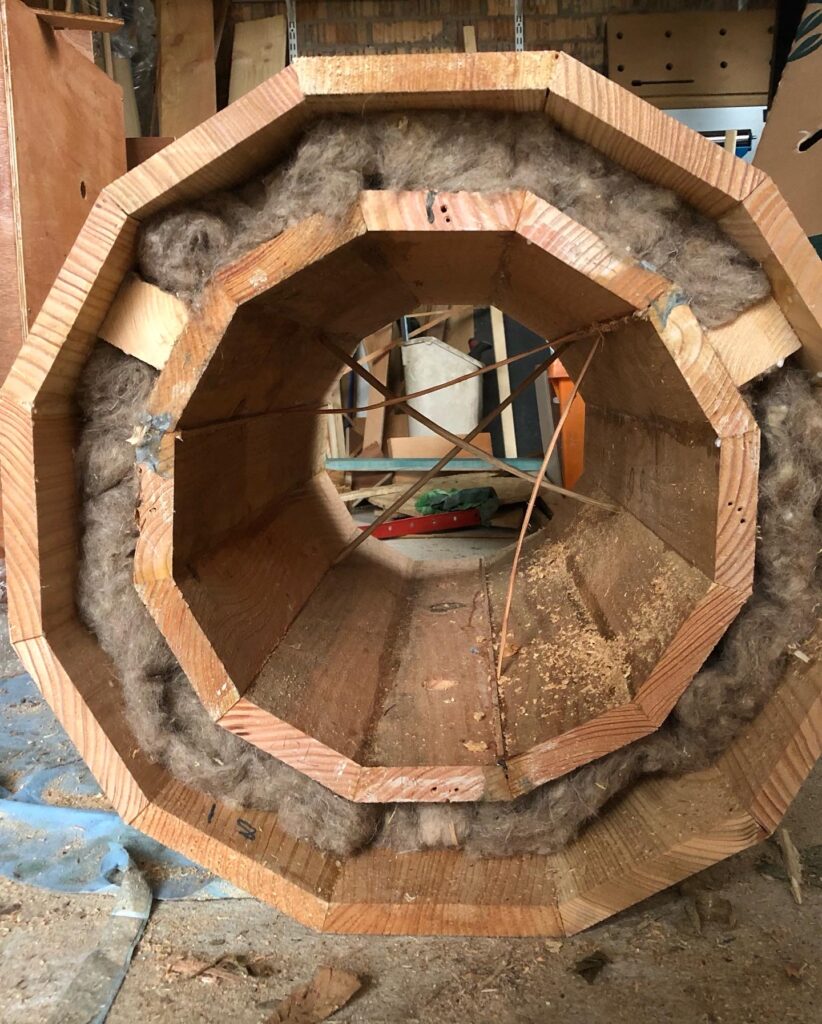
This took me all winter! I decided to follow Matt Somerville and use a 12-sided polygon. Based on this, 15-degree edges are required. I then aimed for an inner cavity of between 40-60 litres. I used an online polygon calculator. Essentially, cross sectional area X height will give you volume. I then searched for rough-sawn timber online. The two widths that were chosen were 100mm (for the inner shell) and 150mm (for the outer shell). Using my tablesaw, I first cut the 15degrees on both long edges. I then cut them to the length I needed (in this case it was almost 60cm) to make 60L.
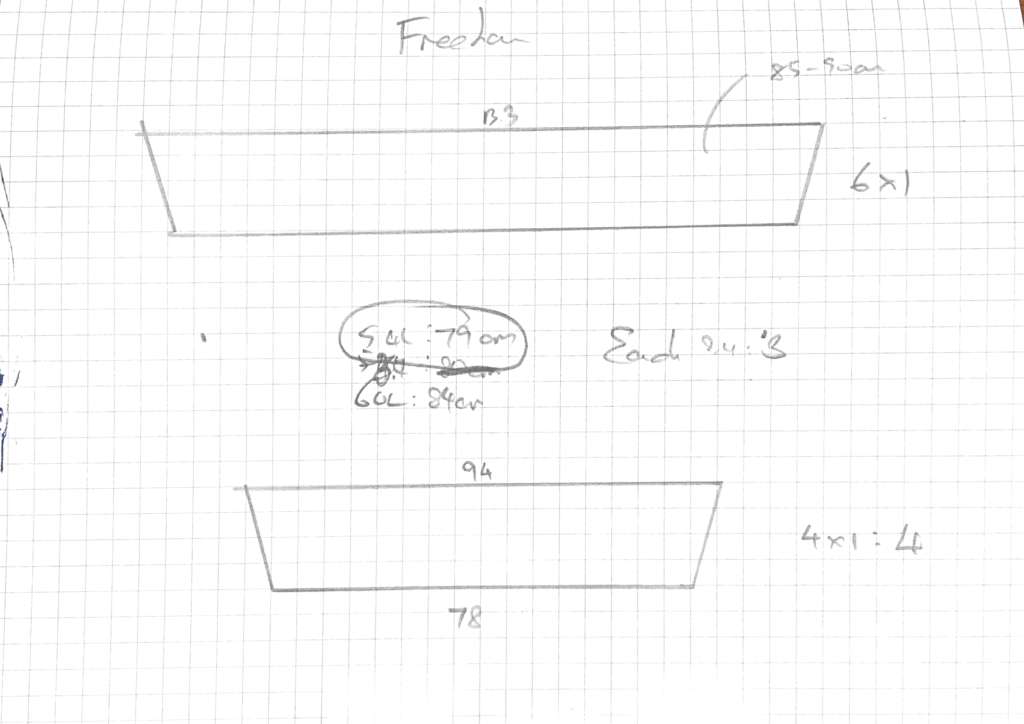
Once all the timber was cut, it was time to assemble and glue. At first, I tried gluing the pieces without screws but I found this too difficult and my cuts were not accurate enough. In order to glue two peices together, I needed to cut a small jig to clamp the pieces while maintaining the 15degree angle. After they were glued and clamped, I then screwed three screws for each joint. When both inner and outer shell were complete, they were placed in position and some pieces of planed timber were slotted to brace both shells. I calculated this beforehand so that the gap would be approximatey 50mm, and so I used 50x50mm planed timber for these braces. However, I needed a wider piece for the entrances, so for this surface I used 50x100mm planed timber.
For the insulation, I had some spare wool-based insulation. Stuffing it into the gaps was a little more difficult than I anticipated due to the rough-sawn timber, so I had to use a stick to push them into position. I realised that these would be subject to insect damage (since my cuts were not that accurate), so I decided to glue on some spare bubble wrap, thereby sealing the wool from exposure to the outside.The entrance holes were drilled to 25mm (one top and one bottom entrance). For the top cover, I cobbled together some scrap wood, cut it to size and screwed it on. For the bottom, I used a single piece of spare hardwood ply cut to the size of the inner shell’s cross section. In addition, I did not want the hive to just stand on the end grain of the wood. So I used a scrap piece of wooden worktop cut to the size of the inner surface of the outer shell. This was then hinged and secured to the bottom of the hive. This allows water to flow off the vertical walls without collecting on the bottom cover, and prevents the end-grain from having prolonged contact with water. The entire outer surface of the hive was finished with a protecting base-coat followed by Osmo UV protection oil.
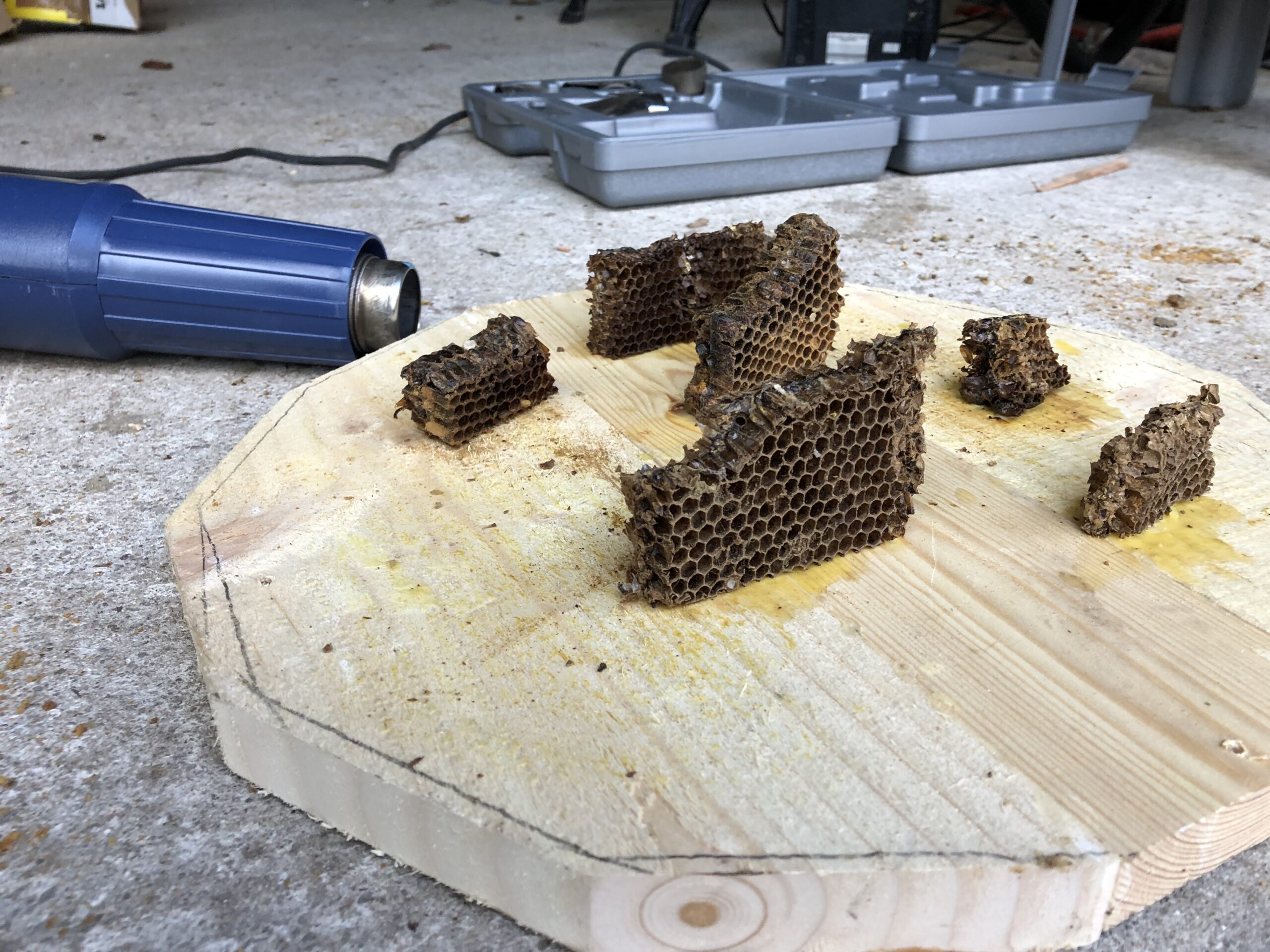
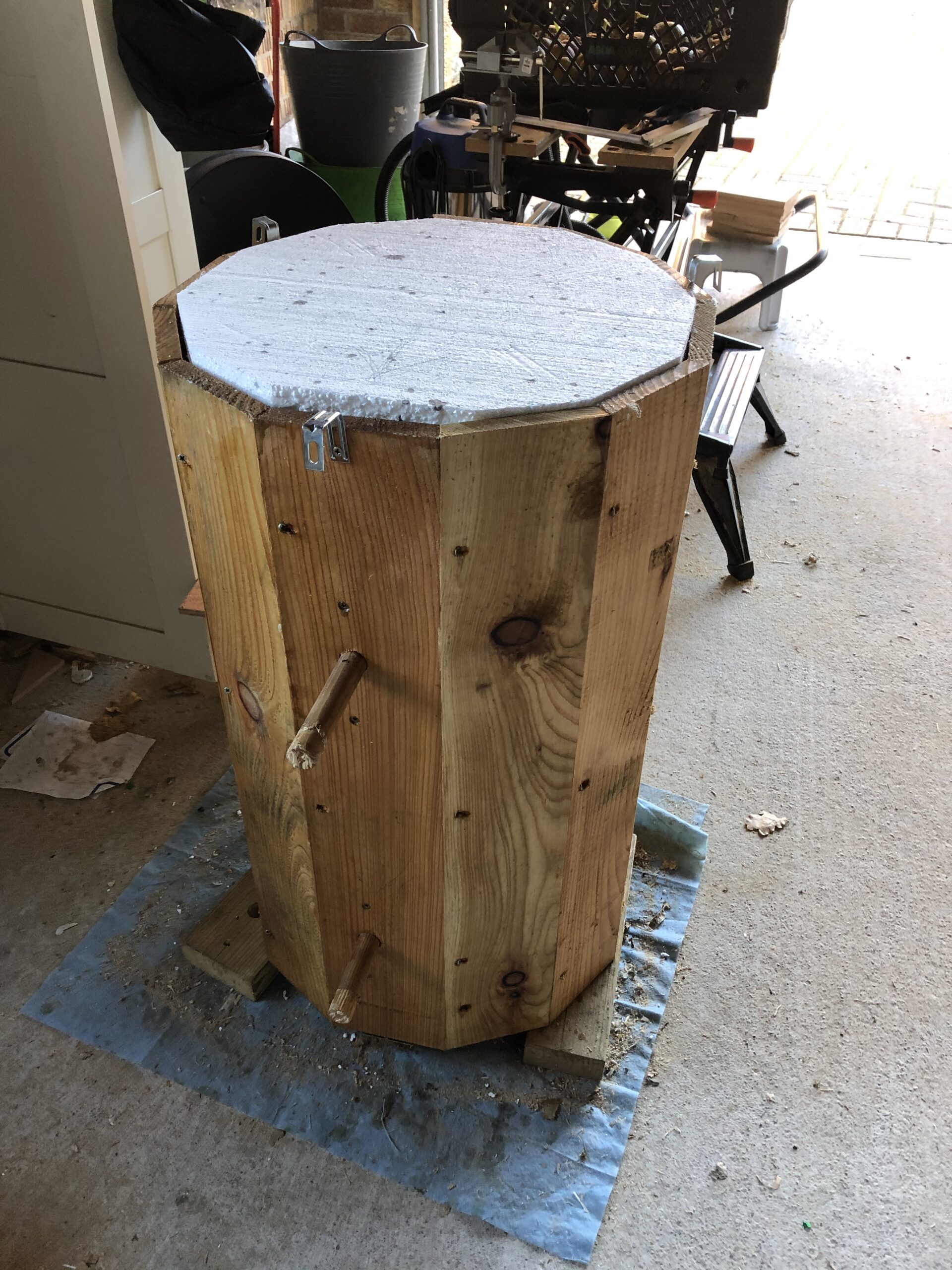
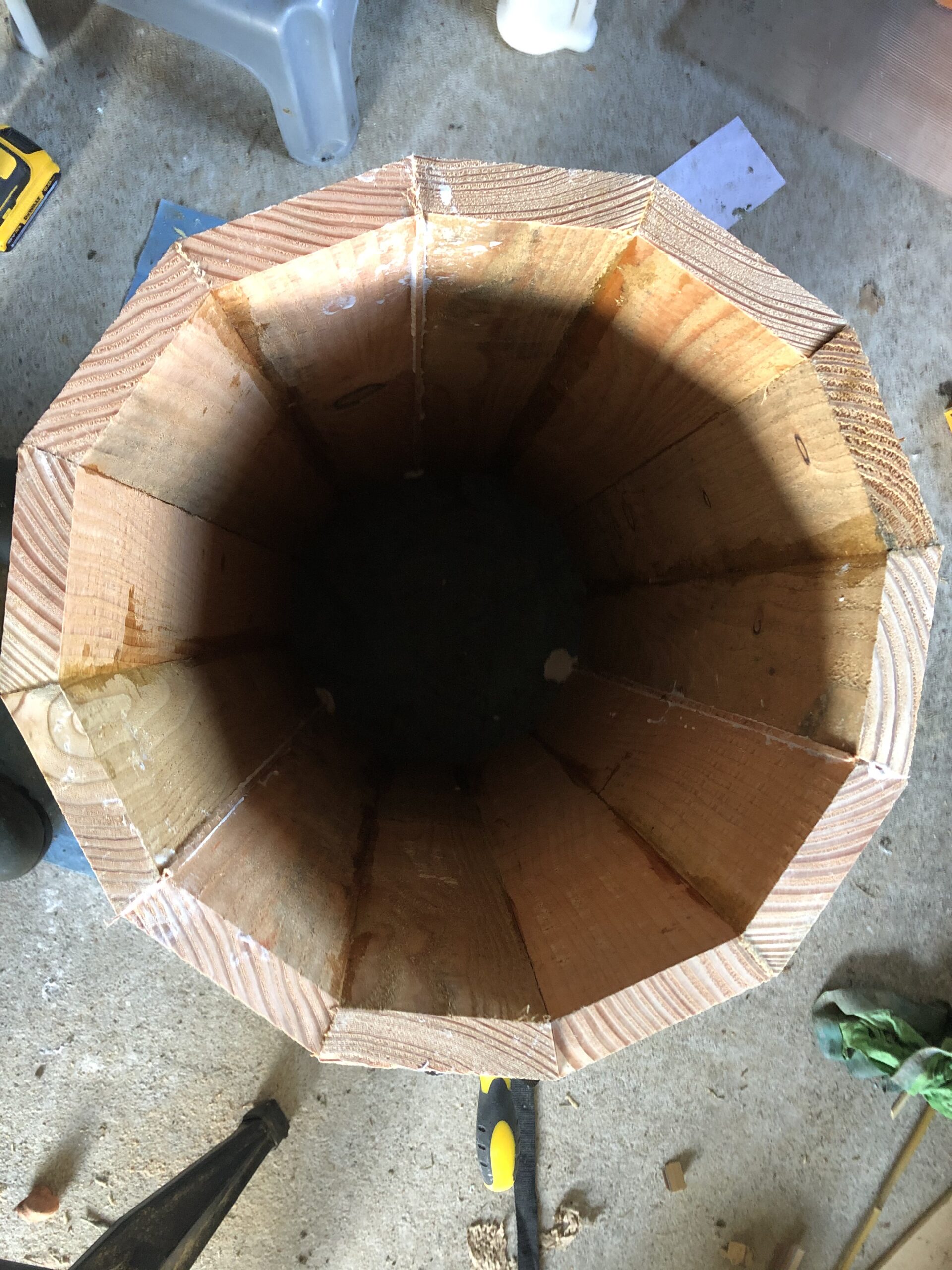
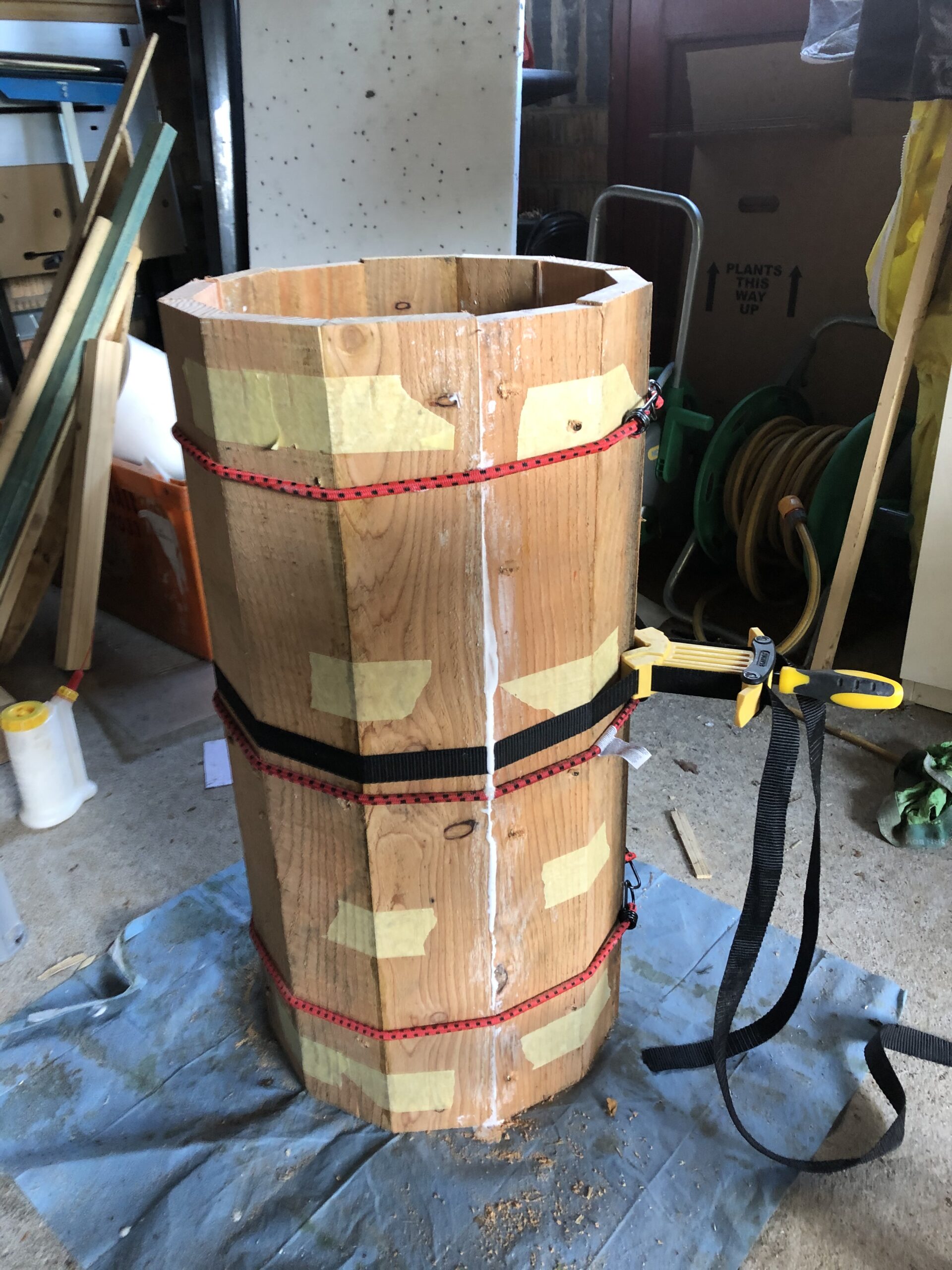
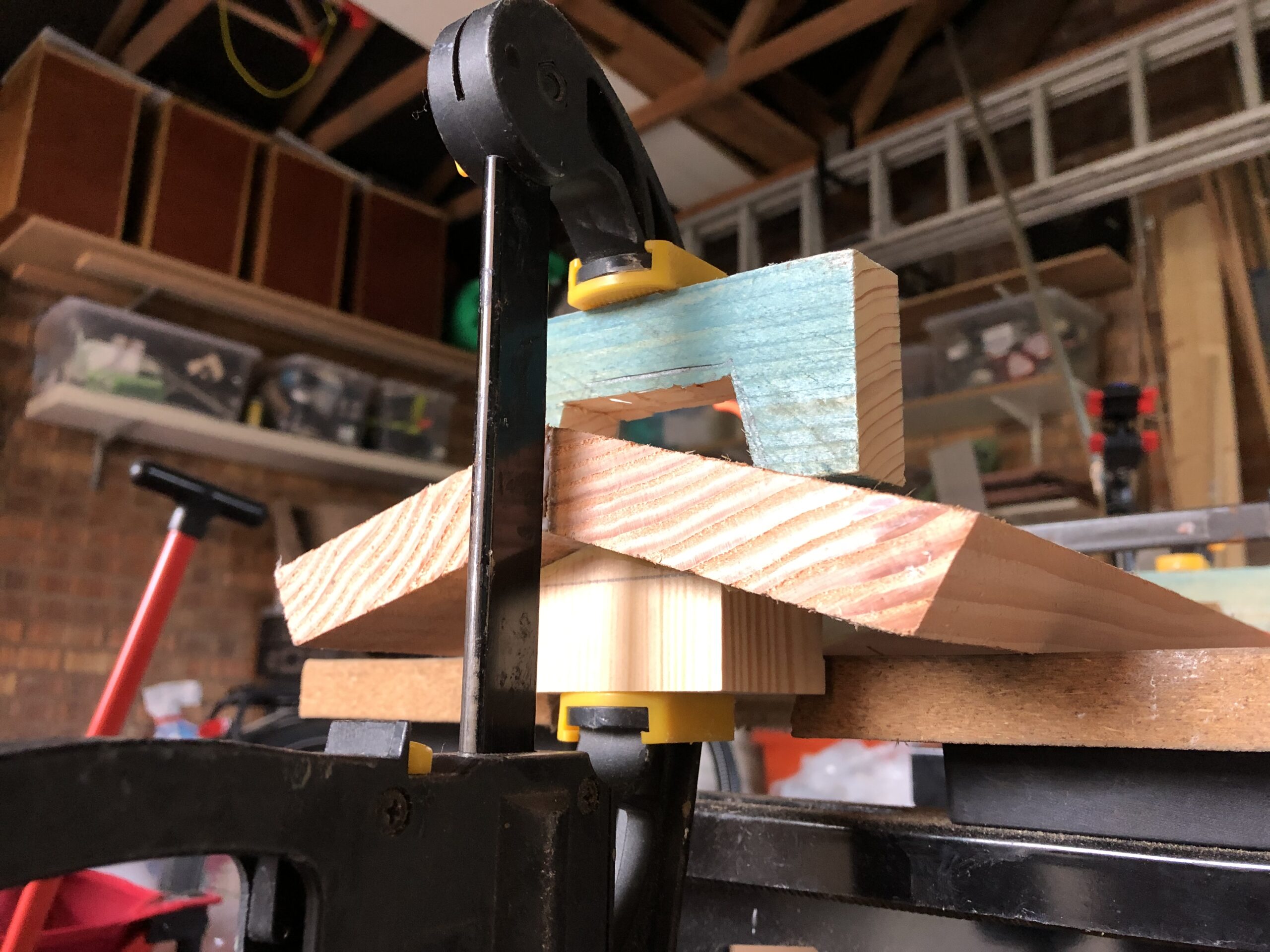
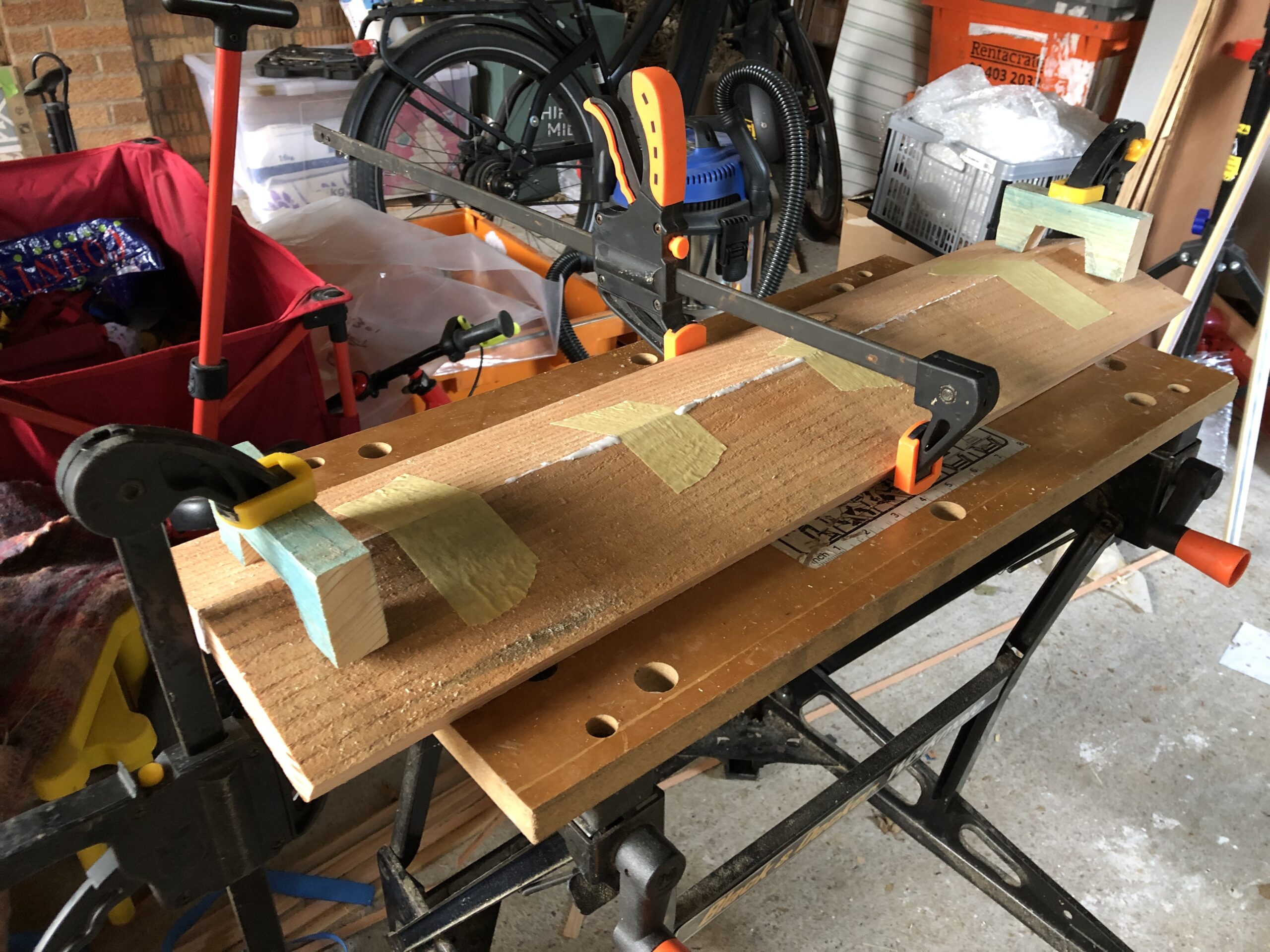
We took some time trying to decide how and where to place it, as well as how high it was going to be off the ground. Serendipitously, we managed to get our hands of a couple of thick logs which could act as a base. I did not want the bottom of the hive to remain in contact with the stumps since this would allow water to collect and accelerate decay, so I propped it up with 3 round pieces of wood, and secured the hive to the logs with coach screws.
Finally, the roof. As much as we would have loved a straw heckle like Matt Somerville, it would have taken a lot of time and effort as I did not have access to straw nor have experience of working with it. So instead, I used a plastic pot tray of 60cm diameter turned upside down. Scrap polysytrene added further insulation. Below that is 20mm of wood as the cover for the inner cavity. On this inner surface, some old brood comb was attached as attractant. The eventual plan is to put a bird-bath on top of the pot tray.
Freedom hive journal
2022
In March 2022, we opened the hive, having attached some old brood comb onto inner surface of the top cover and rubbed the inner walls with propolis. I melted some wax in order to attach the comb to the wood. Now we wait for a swarm.
10 May 2022
We returned from the SCTS conference in Belfast to note purposeful foraging activity on the swarm trap on the North aspect of the house. Peeking into the top lid, there was indeed a swarm in there. Our neighbour had noticed “a lot of bees” in the late morning on 9 May 22. After sunset, we used a cam strap to secure the trap, close the entrance and brought it down. We weighed it, which revealed a swarm of roughly 2.4kg (this was a big swarm). At 2130hrs, we shook the swarm into the freedom hive. They had started storing honey and pollen in the old brood comb at the back of the trap, and had built additional comb of about 7 cm diameter. The rest of the bees in the trap were run into the freedom hive entrance. Clematis leaves were placed at the entrance to force re-orientation. By 2300hrs, almost all the bees were in.
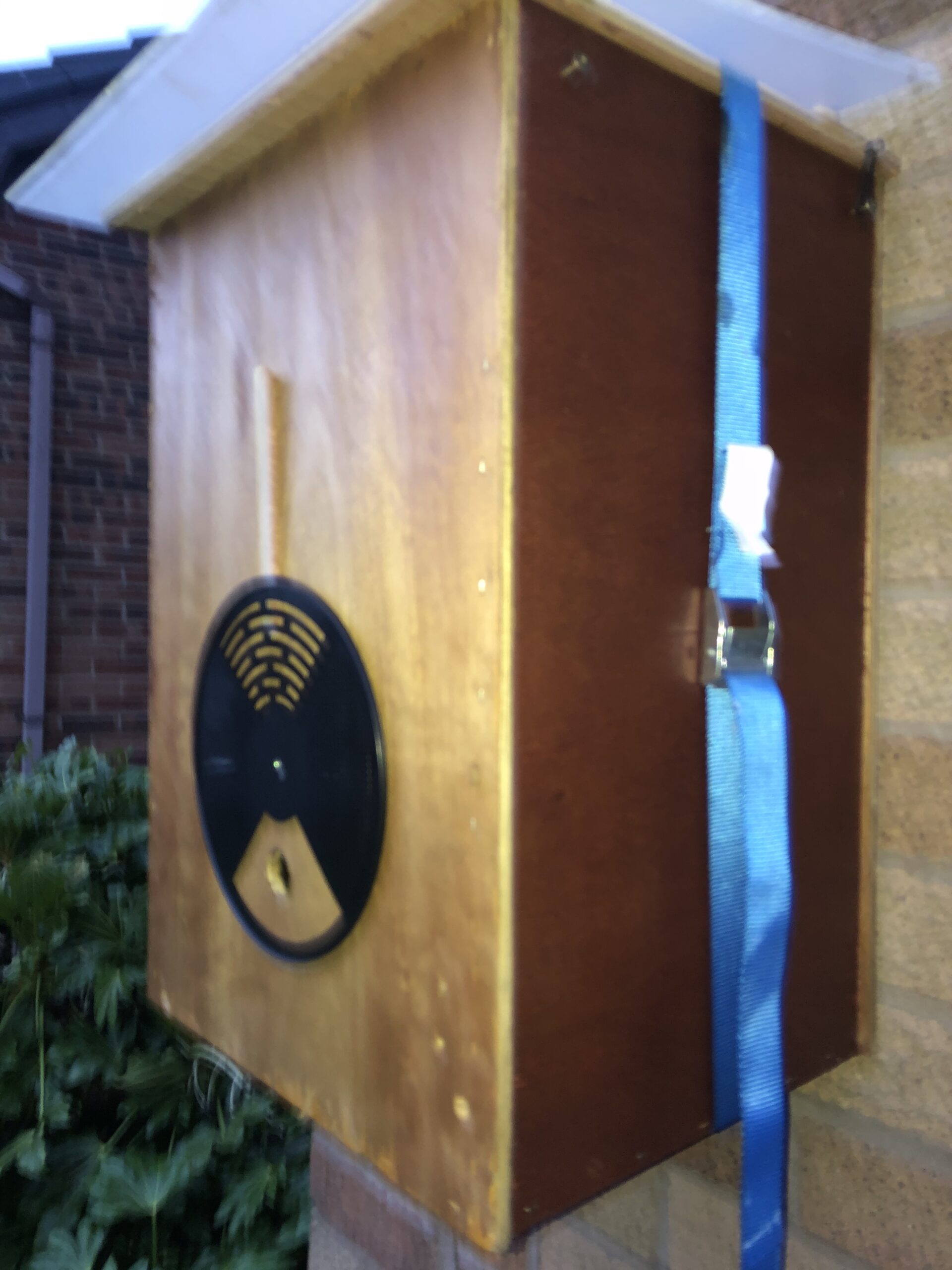
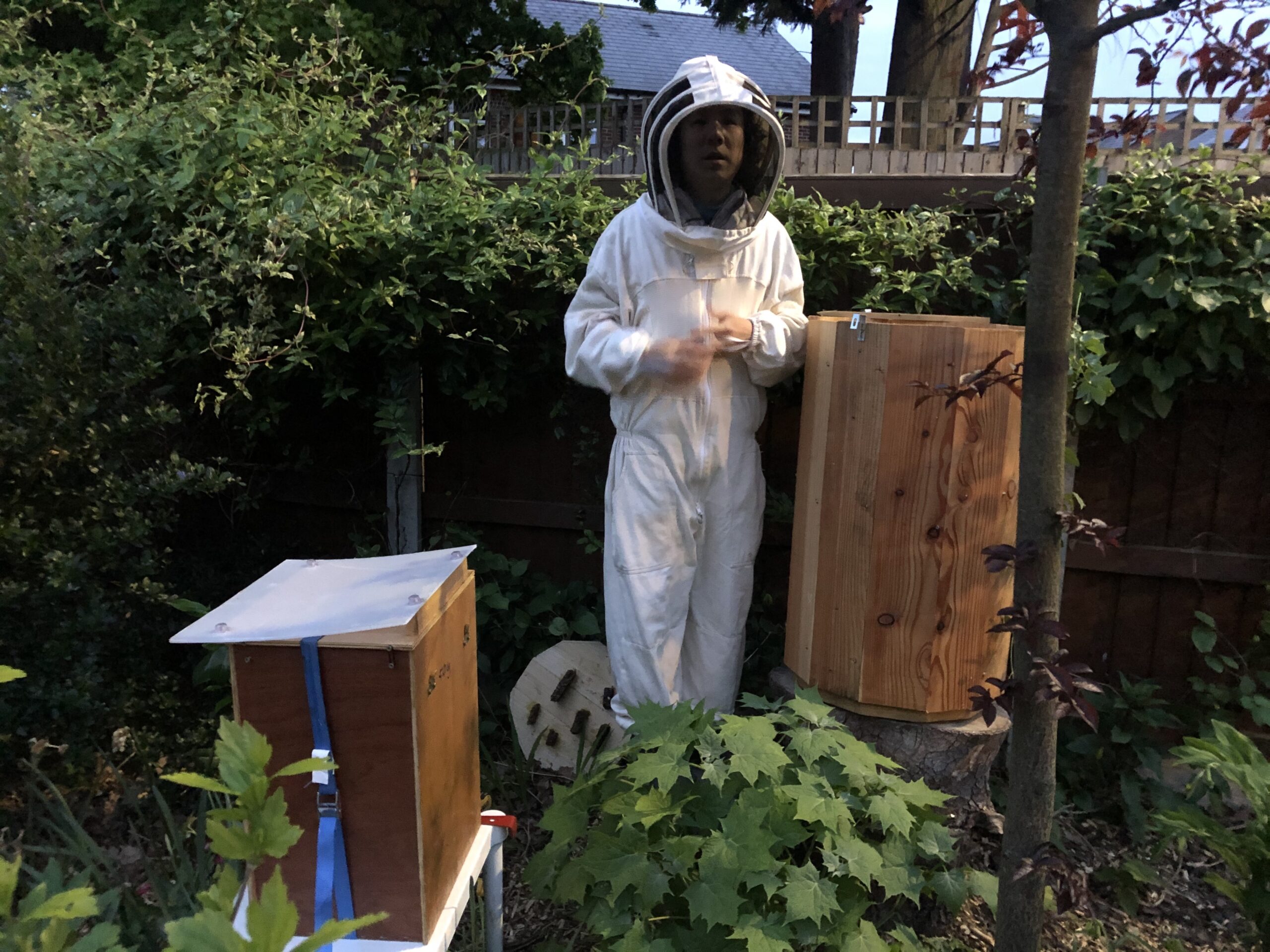
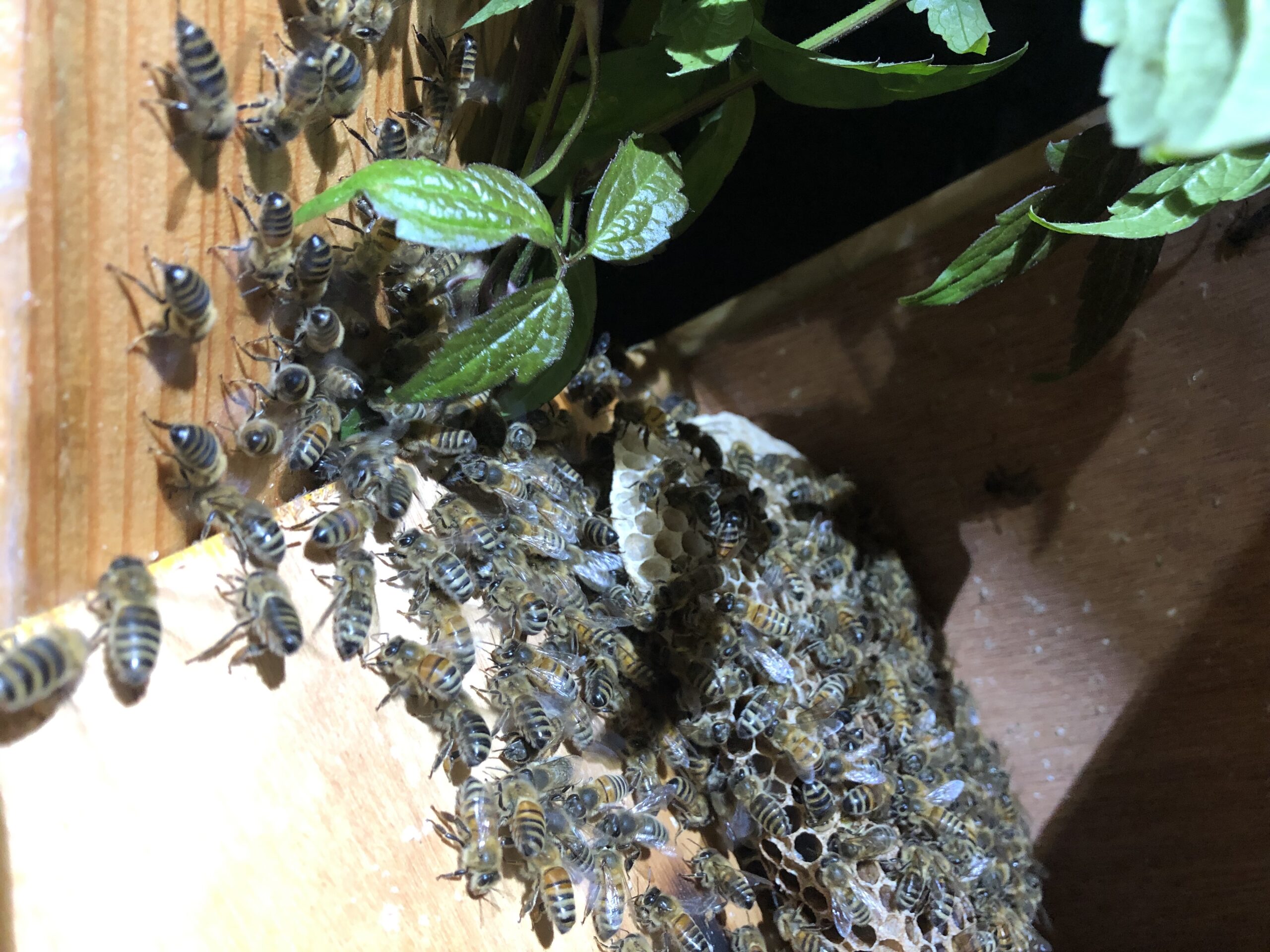
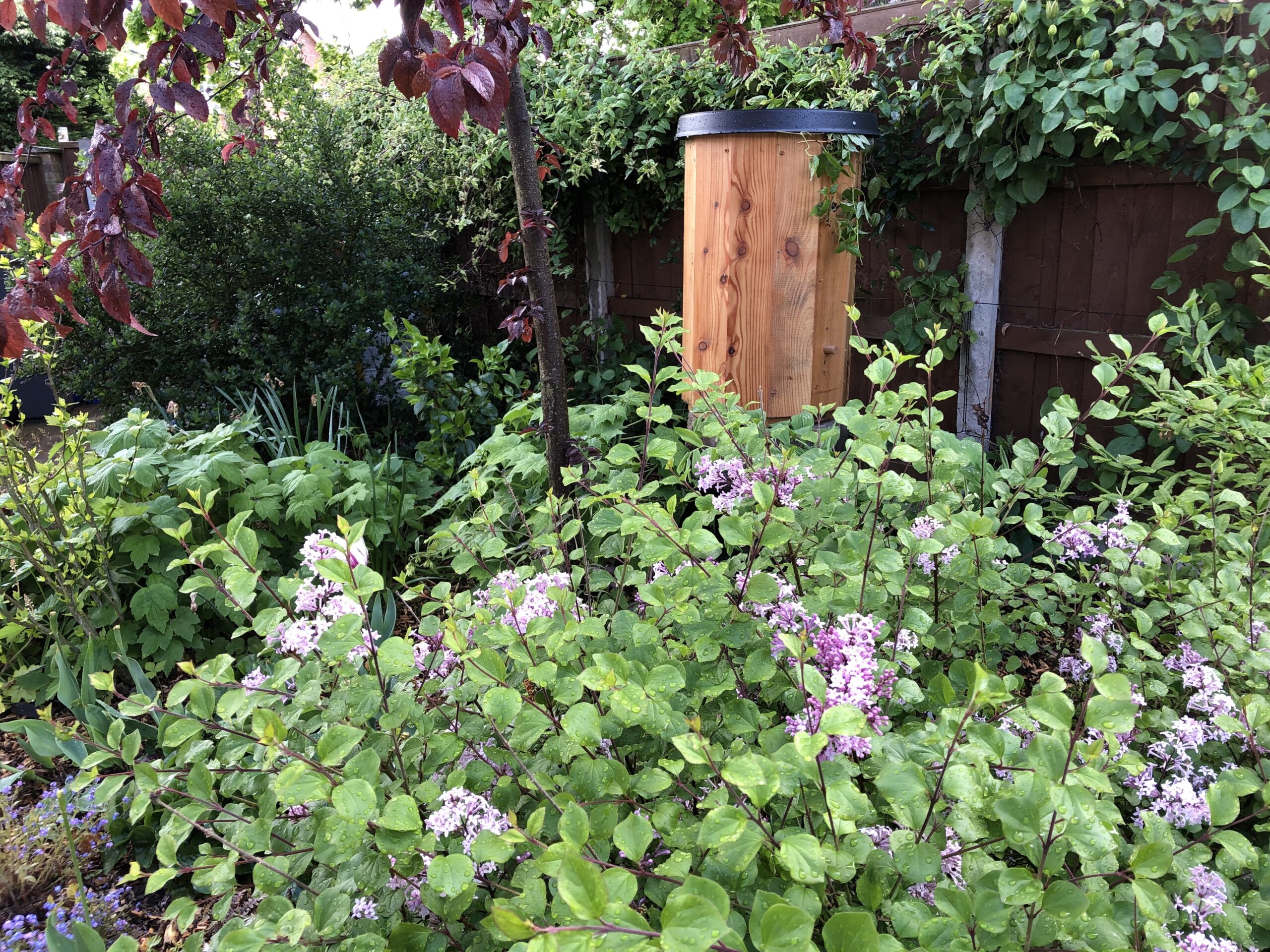
After a couple of days, we put the swarm trap back onto the North wall of the house. By then, we had observed pollen going into the hive and were convinced the bees were unlikely to abscond.
27 June 2022
A fresh batch of bees emerged yesterday, crowding up the entrance of the Freedom hive. I had opened the bottom entrance a week prior due to crowding at the top entrance, but the bees seem not to like it and propolised it to reduce the size. So I watch on with curiousity, surppressing the sometimes overwhelming desire to look inside, knowing that they will get on better without my interference, yet yearning one day to glimpse the superorganism and the intimate architecture of the thriving colony inside. Till the next day.
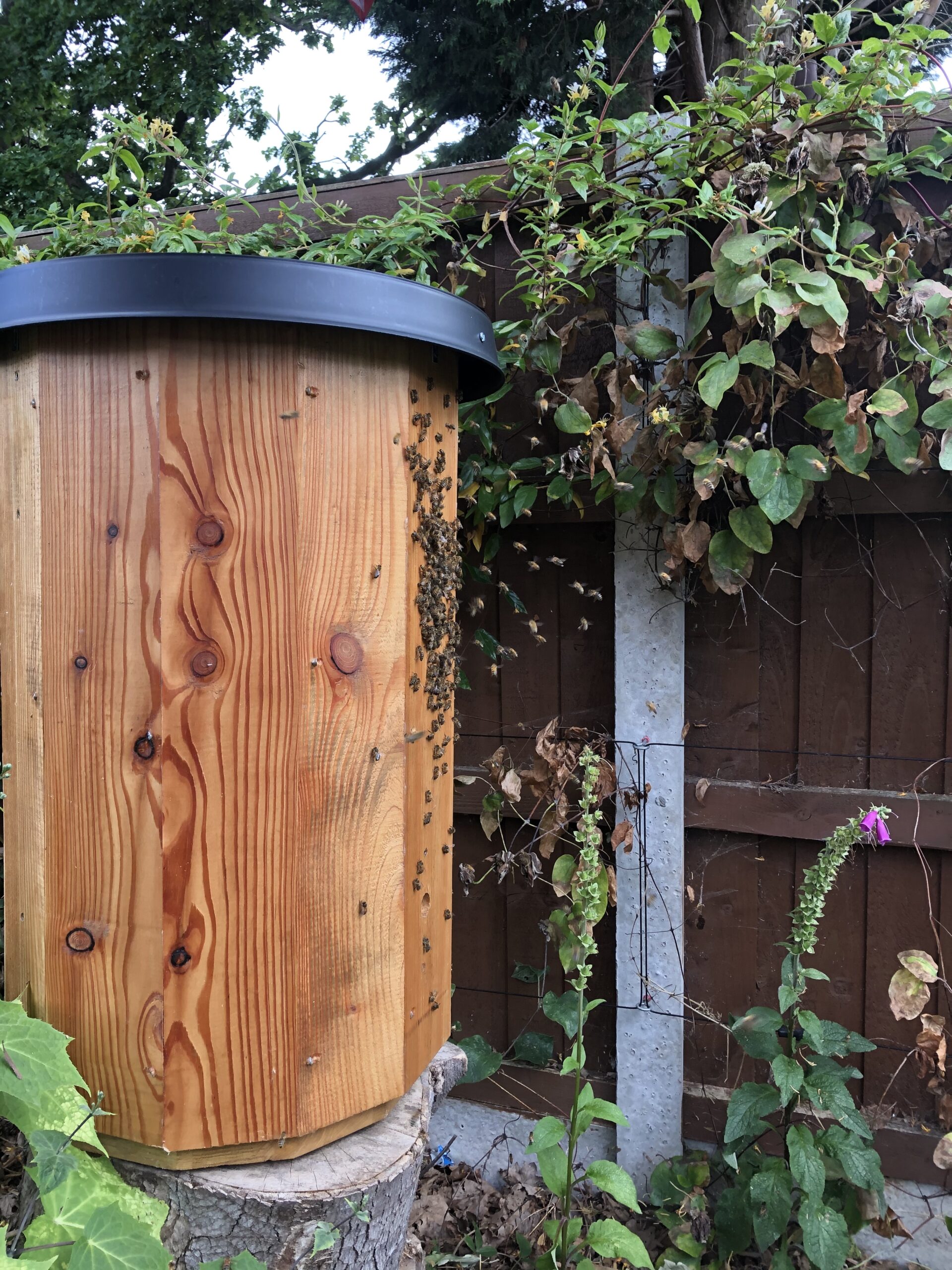
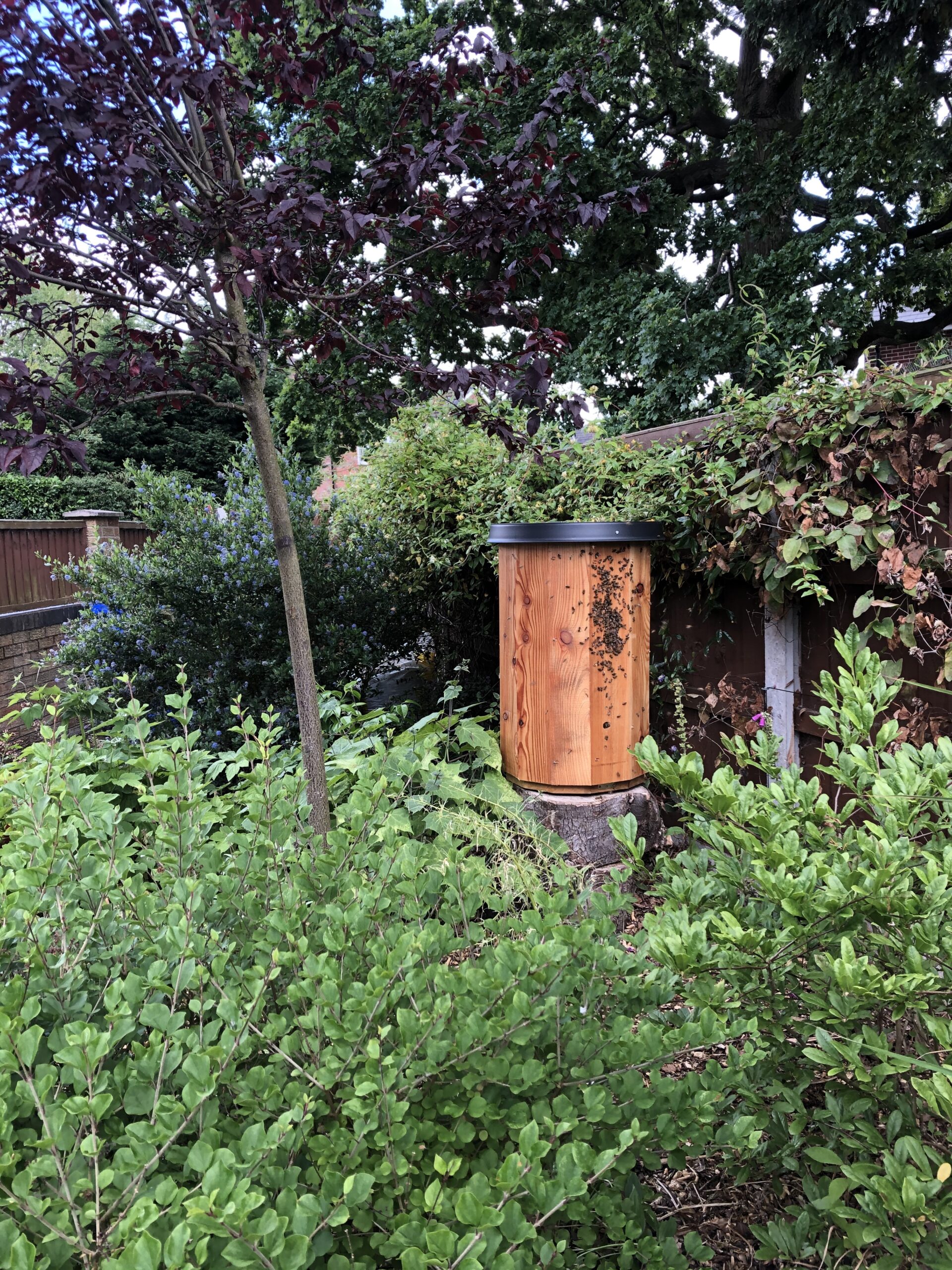
19 July 2022
In 37C heat, there was a seeming mass defiance of gravity. No rock climber could compare, yet the throng of hundreds, no thousands, gathered in solidarity, clinging to every tiny crevice on the smooth, vertical face, clearly preferring the great outdoors to the sweltering city inside. Some held onto each other, limbs outstretched. Others clambered on top of their siblings, who seemed not to mind, just to experience the occasional fresh breeze. The entrance is obscured by bees, but somehow returning foragers manage to squeeze past, singularly-minded in their service to fill those towering catecombs with the liquid gold in exchange for their survival through winter. But with the rate of climate change, who knows what the exchange rate really is?
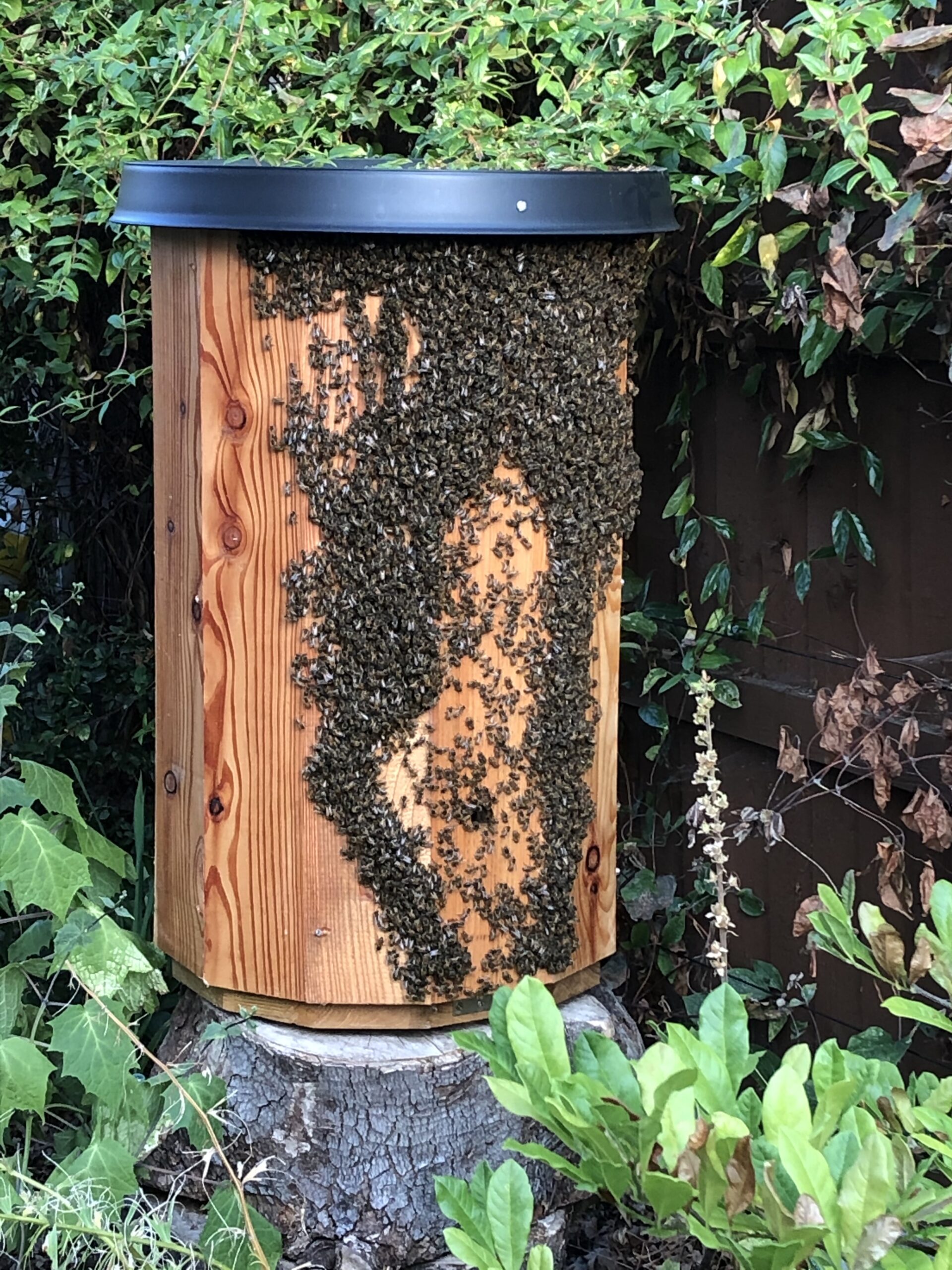
2023
17 Mar 2023
The Freedom hive seemed very healthy throughout winter. They were the earliest to begin forage out of all the hives. Plenty of pollen was seen entering the hive. The bees seem content and I expect a swarm from them this year.
26 Jun 2023
One of the aims of the Freedom Hive is to encourage effective hygienic behaviour and natural varroa resistance. There is evidence that when a hive is disturbed, hygienic behaviour diminished for up to a week. When bees are left to their own devices, they develop strategies to thrive and control pests and diseases. In this way, the Freedom Hive allows strong genetics to swarm and populate other areas.
Our nanny witnessed the Freedom Hive swarming on Friday 26 Jun 2023. It was the first swarm she witnessed and understandably was apprehensive about going out of the house. We don’t know where this swarm went, and whether it eventually came back to our own swarm trap on 27 Jun 2023.
A day after the swarm, there was a reduction in activity at the entrance, but within a week, this seemed to have recovered and plenty of bees were seen foraging and orientating. The warm weather spell maximises the chances of the new queen mating. Our fingers are crossed.
2024
18 Mar 2024
Really healthy looking hive throughout winter. The first hive to start forgaing, and by far the most activity seen at the entrance. The Freedom hive seemed to have thrived, so we planned on harvesting excess honey. However, on opening the top of the hive, I was surprised to see comb that was mostly empty, which suggests that they used up most of their honey stores throughout winter. No harvest was made, and we closed up the hive.
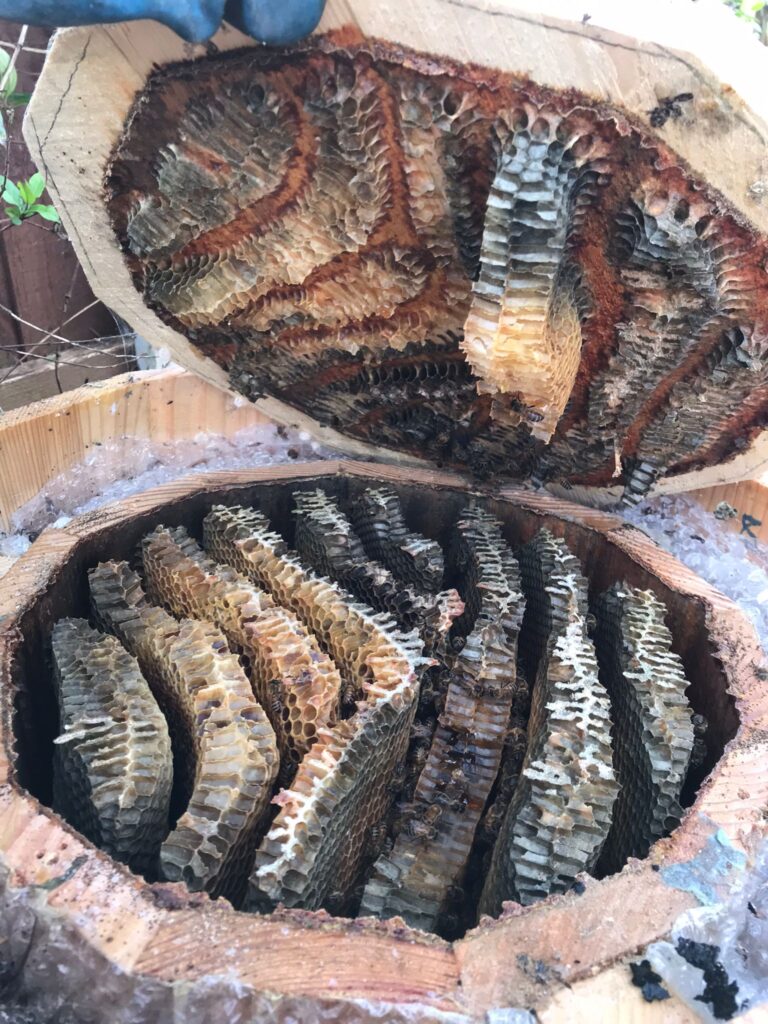
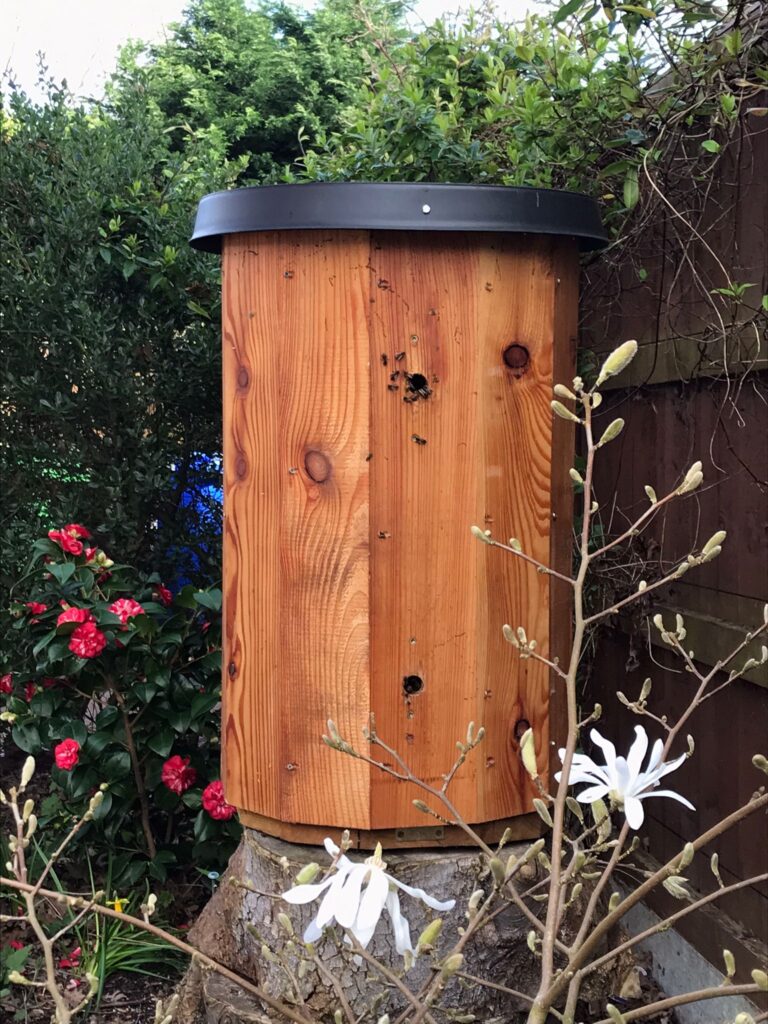
25 May 2024

The Freedom hive swarmed today. We initially thought there were two swarms, as one has clustered on a fence panel, and the other up the an oak tree some 5 metres overhead. We decided to run the cluster into a swarm trap. However, there seemed to be a cluster hestitant to move from the top of the fence panel. Looking more closely, I discovered the queen there and put her into the swarm trap. Soon after, the cluster on the fence panel followed her in. We were planning to allow the cluster in the oak tree go, but about an hour later, they joined the rest of the swarm which had already gone into the trap.
This was then transferred to the Pine hive and put in our neighbours’ garden.
References
SEELEY, T. D. 2010. Honeybee Democracy, Princeton University Press.
SCHIFFER, T. 2022. Natural selection vs man-made selection. Online: National Honey Show.

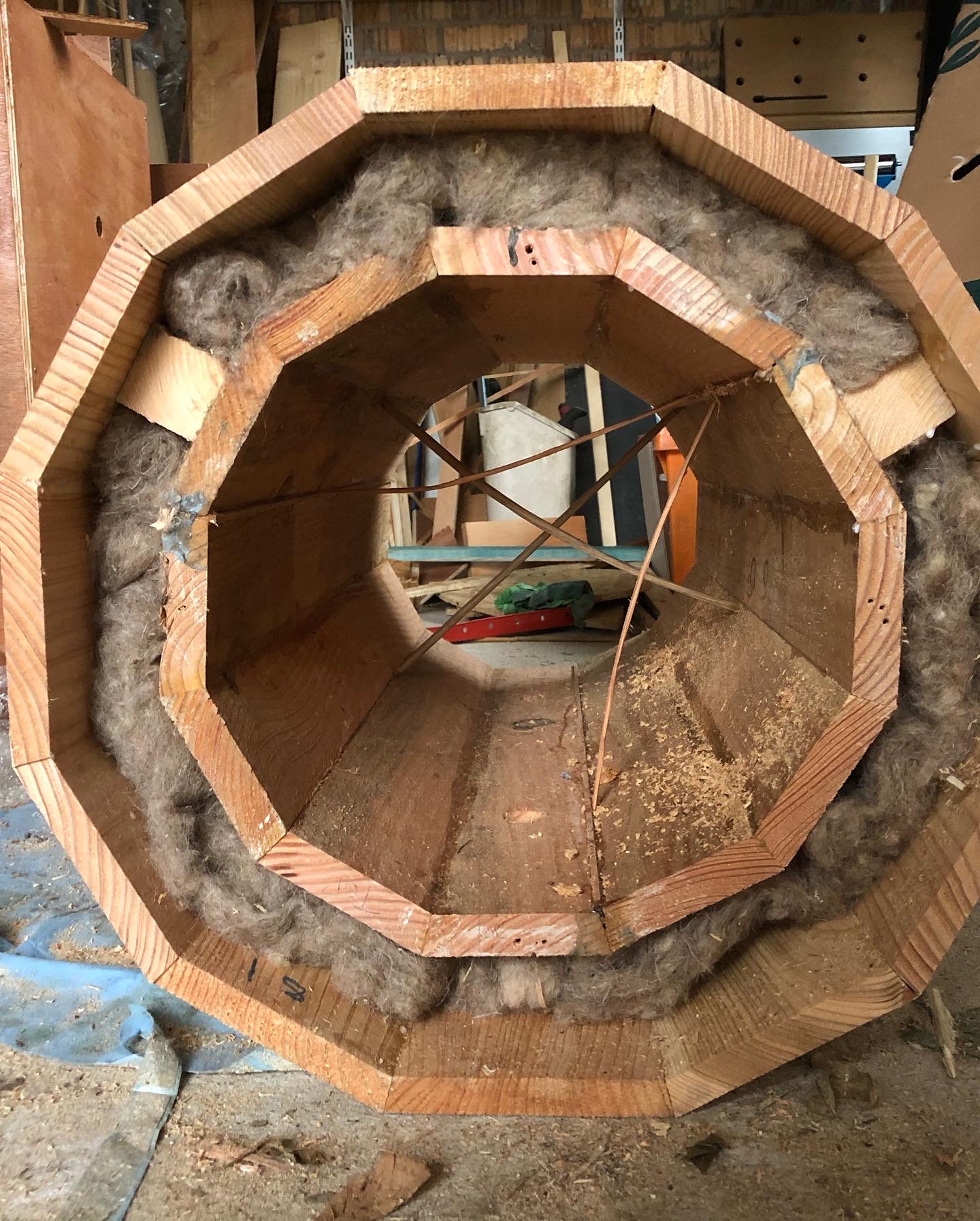
[…] a height which is favoured by bees (above 2m). It shares the advantages of log hives. Click for my Freedom hive […]
[…] got a swarm which was transferred to the Freedom hive. Just to be sure the swarm didn’t come from the Manchester hive, I opened the hive partially […]
Such an interesting read Mark, well done! I always loved your macro bug photography so know ‘bugs n bees’ are a big passion of yours.
Thanks Graham, and lovely to hear from you! Beekeeping has been such an amazing learning journey so far. Hope you have been well.
[…] F = Freedom hive […]
[…] not as popular, probably because I didn’t put any swarm attractant. On Friday morning, the Freedom Hive swarmed. Our nanny caught the spectacle on her camera. By that afternoon the scouts were on the […]